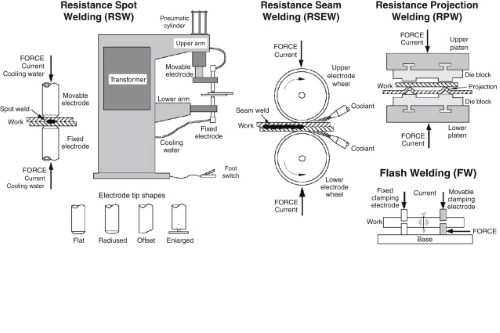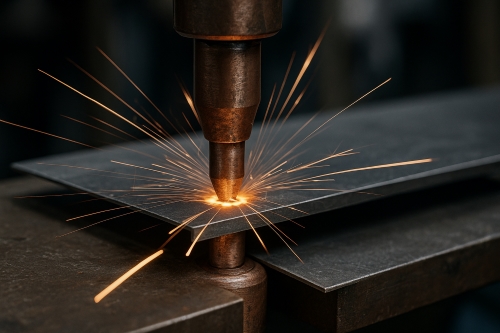List of Sputtering Targets for Tool Coatings
Introduction
Sputtering targets play a key role in producing thin films for tool coatings. This article covers several targets used to enhance the life and performance of cutting and forming tools. Each section provides clear details on material performance, including typical hardness data, wear resistance, and common real-world examples.
Titanium Nitride
Titanium Nitride adds a hard and durable finish to many tools. It is often used as a coating for cutting tools. Its hardness can reach approximately 25-30 gigapascals. Many workshops employ it to extend a tool's life. It also offers a low friction coefficient. Consequently, tools coated with Titanium Nitride tend to exhibit improved performance under high temperatures. Many manufacturers report enhanced resistance to wear. The coating adds a bright gold colour that some customers find appealing as well.
Titanium Aluminium Nitride
Titanium Aluminium Nitride brings improved oxidation resistance and thermal stability. The addition of aluminium helps the coating perform better in high-speed machining. Tools may achieve longer life spans even at elevated temperatures. Typical hardness may exceed 30 gigapascals with this compound. Many tool manufacturers have observed clear benefits in reducing tool wear. The material is simple to apply using sputtering and balances cost with performance very well.
Chromium Nitride
Chromium Nitride is valued for its low friction and consistent performance in various environments. This target typically produces a coating with good corrosion resistance. In demanding applications, its wear resistance is significant. The coating can be applied on moulds and dies as well as cutting tools. Chromium Nitride provides reliable performance. Numerous production lines utilise this material to minimise downtime due to tool failure.
Zirconium Nitride
Zirconium Nitride is recognised for both performance and aesthetics. Tools with this coating offer a wear-resistant surface and a distinctive golden appearance. It has moderate hardness and performs well in less aggressive machining. Many artisans and engineers prefer Zirconium Nitride when both appearance and functionality are important in their tools. Its usage is common in industries that require both durability and a professional finish.
Tantalum Nitride
Tantalum Nitride provides a unique set of benefits. It adds hardness and also functions as a diffusion barrier. This target is sometimes employed on tools that require additional protection against chemical reactions. Users in the semiconductor and energy sectors have found Tantalum Nitride beneficial. Its high resistance to oxidation and corrosion makes it a suitable option for supporting tools that face harsh conditions.
Vanadium Nitride
Vanadium Nitride is known for excellent wear resistance and increased hardness. In some instances, the hardness can rival that of Titanium Nitride. It is used on tools for heavy-duty operations. Vanadium Nitride coatings provide an additional layer of protection in demanding applications. In practical terms, the use of Vanadium Nitride reduces friction and prolongs the tool's life in automotive and metal forming sectors.
Carbon-Based Coatings: Diamond-Like Carbon, Titanium Carbide, and Chromium Carbide
Carbon-based coatings exist in various forms and offer unique benefits. Diamond-Like Carbon is noteworthy when extreme hardness and low friction are essential. Its properties emulate natural diamond to some extent. It is frequently applied on plastic or metal tools that undergo heavy wear. Titanium Carbide and Chromium Carbide enhance toughness and chemical resistance. Some cutting tools feature a combination of these materials to optimise performance. The outcome is a balanced coating that meets both durability and cost criteria.
Multilayer and Nanocomposite Targets
Multilayer and nanocomposite targets combine different materials for enhanced properties. They facilitate the integration of benefits from several compounds into one coating. Some layers increase resistance to oxidation while other layers boost hardness. This approach can result in coatings with excellent thermal and mechanical performance. Many advanced manufacturing facilities have opted for multilayer options when a single target does not fulfil all requirements. Nanocomposites also mitigate the risk of crack formation in the coating. This technology may incur a higher cost but often proves worthwhile in precision applications.
Target Selection Criteria
Choosing the appropriate sputtering target is a careful process. The factors include the end use of the tool, the desired hardness, and operating temperature. One must consider friction coefficient data reported in numerous cases. Focus should also be on the coating adhesion. A suitable option matches the method of sputtering deposition. Other factors encompass cost, environmental resistance, and availability. In multiple studies, engineers report enhanced production when the target aligns with specific performance data. Practical experience and hands-on assessments are crucial for making the right choice. In the field, a well-selected target results in fewer tool failures and lower production costs.
Conclusion
A variety of sputtering targets exists to fulfil the needs of tool coatings. Each material has a specific role. Titanium Nitride and Titanium Aluminium Nitride yield superior hardness for many cutting tools. Chromium Nitride and Zirconium Nitride serve essential applications with a balance of wear resistance and appearance. Tantalum Nitride and Vanadium Nitride provide additional chemical and thermal resistance in aggressive environments. Carbon-based coatings and multilayer targets expand the limits of what a single material can achieve. For more information, please check Stanford Advanced Materials (SAM).
Frequently Asked Questions
F: What is the benefit of Titanium Nitride coatings?
Q: Titanium Nitride coatings increase hardness, reduce friction, and extend the life of cutting tools.
F: How do multilayer coatings enhance performance?
Q: Multilayer coatings balance hardness and oxidation resistance by combining the best properties of various materials.
F: Why choose Carbon-Based coatings for tools?
Q: Carbon-based coatings offer extreme hardness and low friction, suitable for high-wear applications.

 Bars
Bars
 Beads & Spheres
Beads & Spheres
 Bolts & Nuts
Bolts & Nuts
 Crucibles
Crucibles
 Discs
Discs
 Fibers & Fabrics
Fibers & Fabrics
 Films
Films
 Flake
Flake
 Foams
Foams
 Foil
Foil
 Granules
Granules
 Honeycombs
Honeycombs
 Ink
Ink
 Laminate
Laminate
 Lumps
Lumps
 Meshes
Meshes
 Metallised Film
Metallised Film
 Plate
Plate
 Powders
Powders
 Rod
Rod
 Sheets
Sheets
 Single Crystals
Single Crystals
 Sputtering Target
Sputtering Target
 Tubes
Tubes
 Washer
Washer
 Wires
Wires
 Converters & Calculators
Converters & Calculators
 Write for Us
Write for Us
 Chin Trento
Chin Trento



